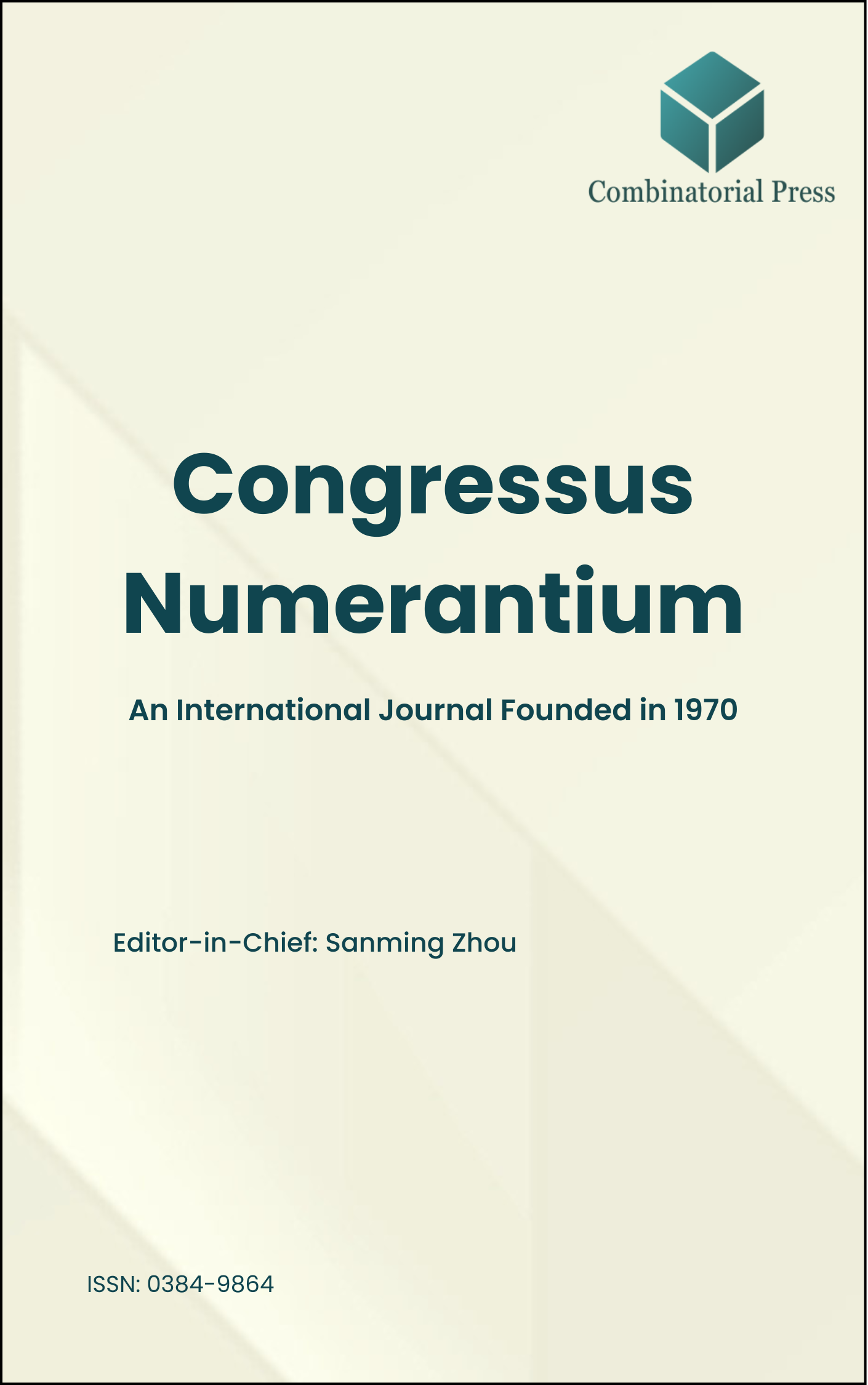
Congressus Numerantium
ISSN: 0384-9864
Established in 1970, Congressus Numerantium is one of the oldest international journals with a focus on publishing high-quality papers in combinatorics and related areas. Over the years, it has published numerous fully refereed regular papers and conference proceedings for many prestigious conferences. However, publication was temporarily paused on January 15, 2020. Throughout its active years, Congressus Numerantium adopted a print format, following a subscription-based model for readers and releasing 234 Volumes. Despite the changing landscape of academic publishing, Congressus Numerantium demonstrated resilience. In 2024, the journal embarked on a transformative journey, reemerging in both print and online formats with the objective of publishing 2 volumes annually, scheduled for release in June and December. We cordially invite original research papers and survey articles, welcoming significant contributions to both the pure and applied aspects of combinatorics. Furthermore, we extend a warm invitation for special issues dedicated to conferences and workshops in combinatorics and related fields, carrying forward the rich tradition of this esteemed journal. Special issues on selected topics of current interest to the community of combinatorics are also welcome.
- Research article
- Full Text
- Congressus Numerantium
- Volume 233
- Pages: 39-52
- Published: 31/12/2019
Edge-Nim is a combinatorial game played on finite regular graphs with positive, integrally weighted edges. Two players alternately move from an initialized vertex to an adjacent vertex, decreasing the weight of the incident edge to a strictly non-negative integer as they travel across it. The game ends when no incident edge has a nonzero weight and a player is unable to move, in which case that player loses.
We characterize the winner of Edge-Nim on the complete bipartite graphs
- Research article
- Full Text
- Congressus Numerantium
- Volume 233
- Pages: 31-38
- Published: 31/12/2019
Given a graph
In this paper, we investigate the pansophy of two classes of graphs that contain a vertex that we define as the superuser. The superuser of a graph is a vertex that is adjacent to every other vertex. We close with future research directions.
- Research article
- Full Text
- Congressus Numerantium
- Volume 233
- Pages: 11-20
- Published: 31/12/2019
A grid on a cell of a game board attacks all neighboring cells. The domination number counts the minimum number of grids such that each cell of a board is occupied or attacked by a grid.
For square boards (chess boards), the domination number has been determined in a series of papers. Here, we start to consider grids on hexagon boards
An upper bound is presented for the grid domination number, and exact values are determined by computer for small
- Research article
- Full Text
- Congressus Numerantium
- Volume 233
- Pages: 21-30
- Published: 31/12/2019
Given a graph
In this paper, we construct a method to determine the pansophy of any complete bipartite graph, and then generalize the method to compute the pansophy of any complete multipartite graph. We close with future research directions.
- Research article
- Full Text
- Congressus Numerantium
- Volume 233
- Pages: 3-10
- Published: 31/12/2019
The \emph{Reconstruction Number} of a graph
A \emph{unicyclic graph} is a connected graph with exactly one cycle. In this paper, we find reconstruction numbers for various types of unicyclic graphs. With one exception, all unicyclic graphs considered have
- Research article
- Full Text
- Congressus Numerantium
- Volume 233
- Pages: 297 -220
- Published: 31/12/2019
In this work, we introduce the Interval Permutation Segment (IP-SEG) model that naturally generalizes the geometric intersection models of interval and permutation graphs.
We study properties of two graph classes that arise from the IP-SEG model and present a family of forbidden subgraphs for these classes. In addition, we present polynomial algorithms for the following problems on these classes, when the model is given as part of the input.
- Research article
- Full Text
- Congressus Numerantium
- Volume 232
- Pages: 265-279
- Published: 31/12/2019
Let
In this paper, we provide our results on the fine structure of the random walk that give insight into this behavior.
- Research article
- Full Text
- Congressus Numerantium
- Volume 232
- Pages: 241-264
- Published: 31/12/2019
We utilize the flexible tile model presented in [13] to design self-assembling DNA structures from a graph theory perspective. These tiles represent branched junction molecules whose arms are double strands of DNA.
We consider
In the first scenario, graphs of a smaller size than
We provide optimal tile sets for all
- Research article
- Full Text
- Congressus Numerantium
- Volume 232
- Pages: 233-240
- Published: 31/12/2019
An upper bound on the energy of graphs is obtained using the spectral moments of the eigenvalues of the adjacency matrix associated with the graph, utilizing the method of Lagrange multipliers and properties of cubic equations
- Research article
- Full Text
- Congressus Numerantium
- Volume 232
- Pages: 221-232
- Published: 31/12/2019
A polyhex is a set of hexagons of the Euclidean tessellation of the plane by congruent regular hexagons. Then, a polyhex graph has the vertex points of the hexagons as its vertices and the sides of the hexagons as its edges. A rectilinear drawing of a graph in the plane uses straight line segments for the edges. Partial results are given for the maximum number of crossings over all rectilinear drawings of a polyhex graph





